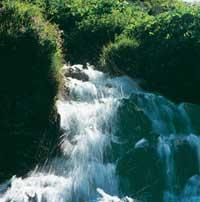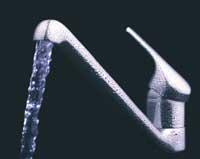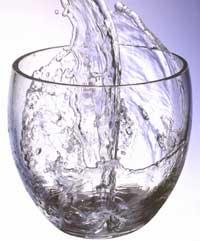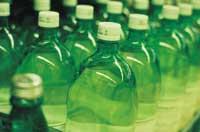Energy charge of bottled water
2009/03/21 Lakar Iraizoz, Oihane - Elhuyar Zientzia

Campaigns, blogs, news, etc. They appeal not to buy bottled water, either for lack of the necessary information, either for the difficulty of performing calculations or for any other reason, in general, do not argue in the numbers their arguments. Two environmental scientists at the Pacific Institute of California have filled this gap and calculated the energy expenditure that is spent to bring water from the bottle to the hands of consumers.
The research has been published in the journal Environmental Research Letters. According to scientists, on average, between 1,100 and 2,000 times more energy is used by carrying the water from the bottle to the hands of consumers than carrying the tap water. For its calculation, the whole process of bottling of the water of the bottle was taken into account: elaboration of a plastic bottle, processing of the water, labeling, filling of the bottle, closing of the bottle, transport of the bottle to the point of sale and cooling of the water before its consumption. They say that in 2007 the energy supplied between 100 and 150 million barrels of oil was dissipated, transporting bottled water to consumers.

Among all the steps, those that consume more energy are the manufacture and transport of bottles. According to the studies carried out, 50 million barrels of oil are used every year in the manufacture of water bottles, which consume two and a half days in the United States. On the other hand, the dissipated energy for the transport of the bottles of water depends on the distance to travel, and sometimes the bottles of water travel thousands of kilometers, since they transport them from one end to the other of the world. For example, the water that emerges in the Fiji islands is sold worldwide.
Is it worth it?
What causes us to drink water from the bottle? According to a report published in the US research institute Worldwatch, three quarters of the water in the bottle consumed is consumed in a dozen countries where tap water has no problem drinking.

No one could imagine that the water we buy in the bottles has better quality than the tap water of our house, so it is better for our health. But the truth is that it does not have to be true. According to California researchers, 44% of bottled water sold in the United States in 2006 was taken from taps.
This tap water is treated in most cases and sold as clean water. To treat water, distill, filter, radiate with ultraviolet light, etc. But basically it is bottled and transported tap water.
In the published study it is not specified how much energy is spent so that the tap water reaches the tap. And that's what other experts criticize, that is, in order to compare it correctly, they had to provide that data. However, researchers say that the treatment they make of tap water from one place to another varies greatly and, therefore, the energy needed for it. However, they say that water is much cheaper from the energy point of view than bottling.
Published in Ortzadar

Gai honi buruzko eduki gehiago
Elhuyarrek garatutako teknologia






